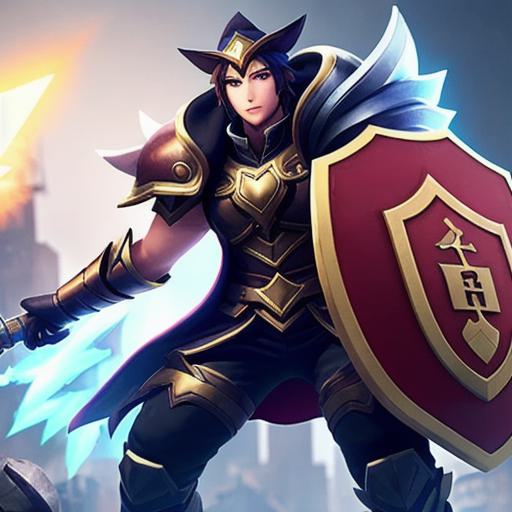
The League of Legends (LoL) is a massively popular online game that has captured the attention of millions of players worldwide. One of the key aspects of the game is team composition, which involves selecting a combination of champions to work together and achieve victory. In this article, we will delve into the world of team composition and explore some strategies and techniques that players can use to build effective teams.
Team composition in LoL involves several factors, including champion roles, synergies, and counterplay. Understanding these factors is crucial when building a team that works well together and complements each other’s strengths. Champion roles are the specific function of a champion within a team, such as top lane carry, mid laner, support, and tank. It is important to select champions that fill these roles effectively and work well together. For example, a top laner who can sustain themselves in team fights and provide crowd control could work well with a mid laner who deals high damage and has strong map awareness.
Champion synergies refer to the ability of certain champions to work well together due to their abilities and playstyles. For example, a champion that can stun or immobilize enemies could work well with a champion that deals damage quickly and efficiently. Similarly, champions that can provide utility, such as crowd control or healing, could complement champions that deal high damage. Synergies can be created through the use of abilities, items, and runes, which can enhance the strengths of certain champions and make them more effective when played together.
Champion counterplay refers to the ability of enemy champions to negate or counter the strengths of a particular champion. It is important to consider the counterplay of enemy champions when building a team. For example, if an enemy team has a champion that deals high damage quickly, it may be necessary to select champions that can provide tankiness and crowd control to survive in team fights. Similarly, if an enemy team has a champion that deals high damage over time, it may be necessary to select champions that can deal high damage quickly and have strong map awareness to take objectives and secure advantages. Understanding the counterplay of enemy champions is essential when building a team that can overcome their strengths and exploit their weaknesses.
Strategies for Team Composition
Now that we have a basic understanding of team composition, let’s explore some strategies that players can use to build effective teams:
- Champion Pairings: One effective strategy is to select champions that pair well together based on their roles and abilities. For example, selecting a top laner who deals high damage quickly and a support champion who provides crowd control and healing could be an effective combination. Similarly, selecting a mid laner who deals high damage and a tank champion who provides tankiness and crowd control could be another effective pairing. It is important to consider the strengths and weaknesses of each champion when selecting pairs, as well as how they complement each other’s abilities.
- Champion Synergies: Another strategy is to select champions that have strong synergies with each other. For example, selecting a champion that can stun or immobilize enemies and a champion that deals high damage quickly could be an effective combination. Similarly, selecting a champion that provides utility, such as crowd control or healing, and a champion that deals high damage could complement each other’s strengths. Synergies can also be created through the use of items and runes, which can enhance the effectiveness of certain champions when played together.
- Champion Counterplay: It is also important to consider the counterplay of enemy champions when building a team. For example, if an enemy team has a champion that deals high damage quickly, it may be necessary to select champions that can provide tankiness and crowd control to survive in team fights. Similarly, if an enemy team has a champion that deals high damage over time, it may be necessary to select champions that can deal high damage quickly and have strong map awareness to take objectives and secure advantages. It is important to understand the strengths and weaknesses of each enemy champion and how they counter your own champions when building a team.
- Champion Diversity: Finally, it is important to maintain a level of diversity in the composition of your team. This means selecting champions from different roles and with different abilities to provide a range of strengths and weaknesses. For example, selecting a top laner that deals high damage quickly, a mid laner that deals high damage over time, and a support champion that provides crowd control and healing could be an effective composition that maintains diversity. Diversity can also help your team adapt to different situations and playstyles, making them more versatile and effective overall.
Conclusion
Team composition is a crucial aspect of LoL that can greatly impact the outcome of a game. By understanding the basics of team composition and applying effective strategies, players can build teams that work well together and complement each other’s strengths. Whether you are a casual player or a professional, mastering team composition can help you achieve success in LoL and enjoy the thrill of competition. Remember to consider the roles, abilities, synergies, and counterplay of each champion when building your team, and to maintain a level of diversity to ensure success in any situation.
